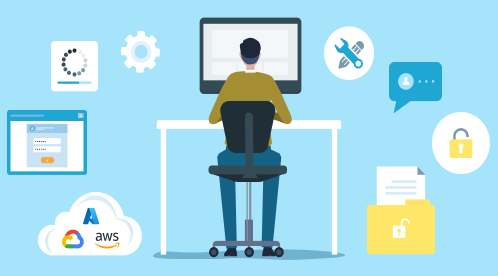
Each year, healthcare providers are facing more cyberattacks, which put patient data at risk and challenge their ability to comply with HIPAA requirements. Attack Surface Monitoring helps these providers protect digital information and stay compliant. Let’s explore how this technology works in the context of healthcare.
What is Attack Surface Monitoring?
Attack surface monitoring helps identify potential security problems by continuously checking (and discovering) digital assets like servers, databases, and software applications. By spotting weak points, healthcare providers can fix them before hackers find a way in.
Why is HIPAA Compliance Important?
HIPAA sets rules to keep patient information private, allowing it to be shared only with the patient’s permission. Healthcare providers must have strong protections in place to secure this data. A data breach can lead to substantial fines and legal problems, making absolute security an important factor for trust and business success.
HYPOTHETICAL SCENARIO
How a Hospital Uses ASM
Imagine a medium-sized hospital with a large digital infrastructure that needs protection.
- Cataloging Digital Resources: The hospital’s IT team uses attack surface monitoring to keep track of all digital assets, like cloud databases and networked applications. Knowing what they have helps them keep everything secure.
- Spotting Software Issues: Daily checks reveal an outdated software version in the hospital’s electronic health record system. Attack Surface Monitoring flags this as a major risk, prompting the team to update the software to prevent a data breach.
- Practice Makes Perfect: To prepare for possible cyberattacks, the IT team practices handling simulated digital threat scenarios. This helps them respond quickly and effectively to any real issues that may arise.
- Checking External Connections: The hospital partners with a cloud service for data storage. Attack surface monitoring routinely reviews the security of this partnership to ensure compliance with the hospital’s security standards.
How Machine Learning Smooths The Process
Machine learning enhances attack surface monitoring by detecting unusual patterns in digital traffic, quickly identifying potential issues that might go unnoticed. It also uses past data to predict where future problems might arise, allowing the team to address vulnerabilities proactively.
Staying on Top of Regulations
Using attack surface monitoring helps hospitals follow the rules more easily. The technology can automatically generate reports for audits, saving time and ensuring accuracy. It also checks compliance in real time, making sure everything stays up to standard even when digital changes occur.
Conclusion
Robust Attack Surface Monitoring (ASM) is crucial for healthcare providers due to their complex, distributed environments that include third-party services and multiple cloud providers, increasing the risk of hidden assets. Compliance with strict data protection regulations necessitates ASM to ensure secure configurations, avoid penalties, and maintain trust. As high-value targets for cybercriminals, healthcare organizations must proactively identify and secure vulnerabilities to prevent data breaches that could compromise patient privacy and damage their reputation.
Need help with your Attack Surface?

For assistance with the details surrounding your particular attack surface, speak with one of our cybersecurity experts to learn more about how Attack Surface Monitoring could help you.